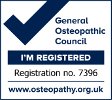How to stand and walk (with good alignment)!

Katy Bowman, the biomechanist whose book Move your DNA I recommend highly and talk about in a short book review in this newsletter and on my blog, has written widely about natural movement and body alignment for health and wellbeing.
Inspired by fantastic blog posts from her website ‘Nutritious Movement’, here is advice as to how to stand without the traditional cues and psychological preferences like ‘take your shoulders back like a soldier’, ‘push your chest out’, ‘I like to hold my tummy in’ and ‘stand as if you’ve got a book balanced on your head’! Standing (and walking) in an aligned way can really prevent lower extremity (foot, ankle, knee), hip, back and upper body pain:

1) Align your foot along a straight line like a book, a yoga mat or using lines on the carpet as I’m doing in this photo (courtesy of my gym cafe carpet) where I’m lining up my little toe and ankle bone on the lines! (Katy demonstrates foot positioning in her YouTube video ‘Advanced Foot Mechanics’ – CLICK HERE). This ensures that the axis of the ankle and the pulley system of the muscles of the calf can move as efficiently as possible without causing friction. If you stand with your feet slightly turned out the lower of the two ankle joints (the subtalar) see-saws right to left while walking which puts a stress on the outside muscles of the shin (front of the lower leg) and causes external rotation of the lower leg. Slightly turned out feet also cause your heel bone to tip over time which can result in knee and hip problems. NB: If you do as you should and walk with your feet lined up as per my foot photo it does feel almost as if you are walking pigeon-toed… that’s fine as your foot is pointing as it should do with the bone of your second toe (next to your big toe) projecting forward at the correct angle. Keep trying to keep your feet in this position when you’re standing or walking.
2) Stand with your ankles at the same width as your hips so that you pelvic list (use the lateral, or side, muscles of the hip) when you walk rather than falling forward. See Katy’s YouTube video on pelvic listing – the guru’s guide to walking CLICK HERE. Check your ankles throughout the day and make sure they stay hip width apart. Ideally don’t cross your legs when you stand or sleep either.
3) Externally rotate the thighs by checking your knee orientation. Katy’s YouTube video ensures that you are correctly aligning your knees and therefore your hips CLICK HERE
4) Get your pelvis centred over your heels – don’t let your body (centre of mass) drift forward over the front of your feet otherwise you’ll be putting undue stress on the soft-tissue and joints of the body.
These 4 steps during standing and/or walking will keep your body biomechanically neutral which will benefit you hugely when you work on everything from abdominal strength to pelvic floor control and much besides.
Contact me for more information about this and/or check out Katy’s Nutritious Movement blog – it’s a fantastic resource which I personally follow avidly. CLICK HERE







